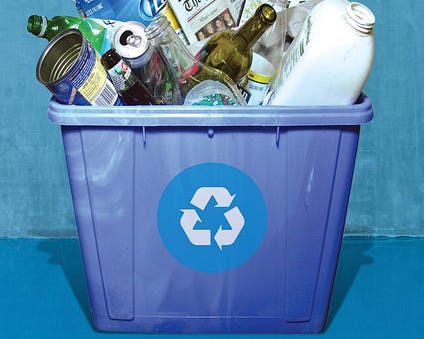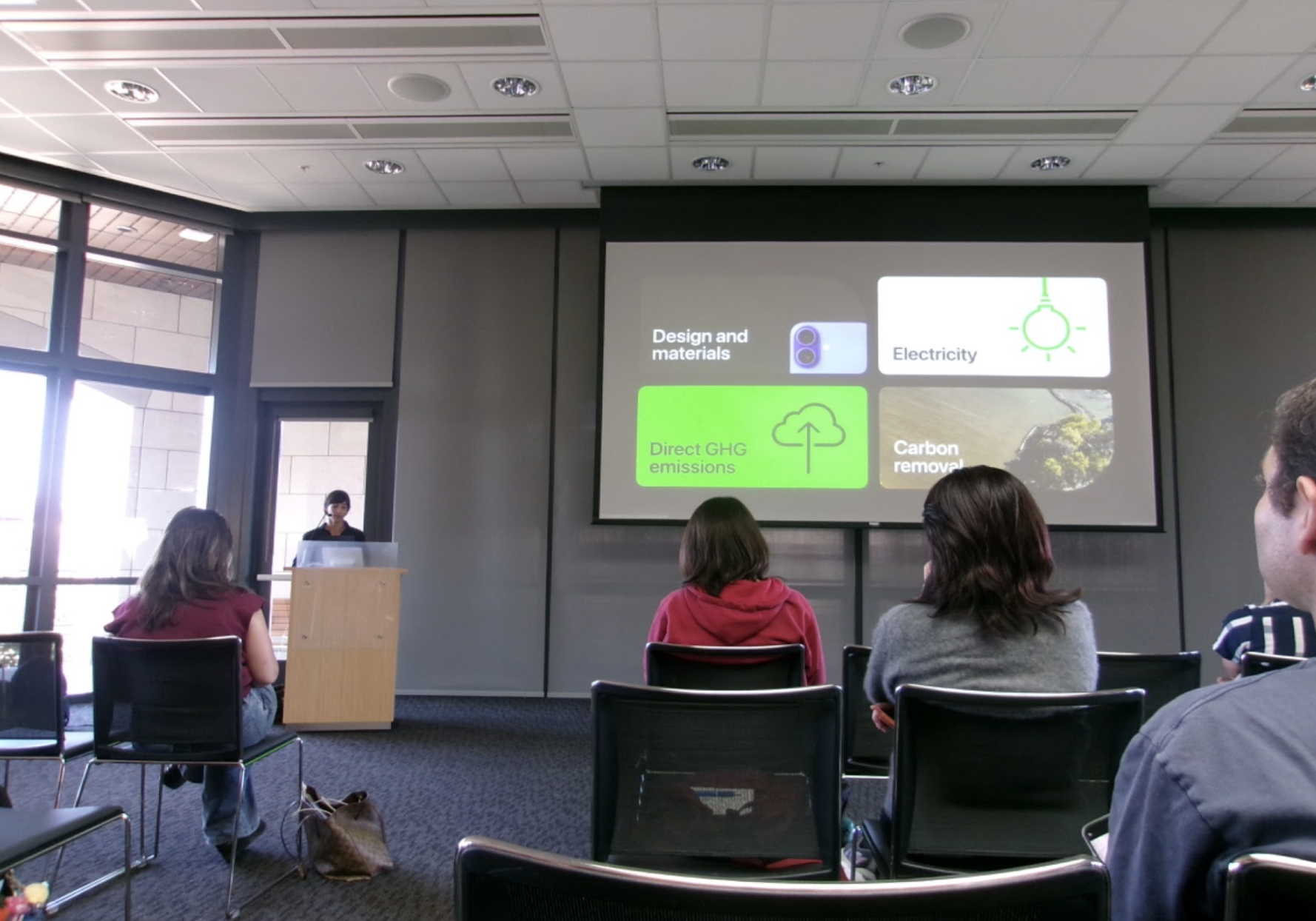Report on Vermont’s Recycling System and its Alignment with Sustainable Development Goals
This report analyzes the state of Vermont’s municipal solid waste recycling system, contrasting it with national trends and evaluating its performance against the United Nations Sustainable Development Goals (SDGs), particularly SDG 11 (Sustainable Cities and Communities) and SDG 12 (Responsible Consumption and Production).
National Recycling Challenges as Barriers to SDG 12
The United States faces significant challenges in achieving SDG 12.5, which calls for a substantial reduction in waste generation by 2030. The national recycling and composting rate was 32.1% in 2018, with recent data suggesting only 21% of recyclable materials from homes are captured. This systemic failure undermines progress toward a circular economy and is attributable to several key factors.
Primary Obstacles to National Recycling Efficacy
- Material Contamination: The U.S. Environmental Protection Agency (EPA) reports a national average contamination rate of 25% in residential recycling streams. This practice of “wishcycling” degrades the quality of recyclable materials, rendering them unusable and economically unviable, directly hindering the efficient use of natural resources as targeted by SDG 12.2.
- Market Instability: The 2018 implementation of China’s “National Sword” policy, which banned the import of contaminated recyclables, exposed the U.S. system’s dependency on foreign markets. The resulting market collapse forced many municipalities to landfill or incinerate materials, a direct contradiction to the principles of sustainable waste management outlined in SDG 11.6.
- The Plastics Crisis: Plastic waste poses a severe challenge to responsible consumption goals. With a recycling rate of only 5-6%, most plastic types lack viable end markets, contributing to pollution and resource depletion. Only #1 (PET) and #2 (HDPE) plastics are effectively recycled on a large scale.
Vermont’s Policy Framework: A Model for Achieving SDG Targets
In contrast to the national landscape, Vermont has developed a resilient recycling infrastructure through deliberate policy actions that align with the SDGs. The state’s success in diverting waste from landfills is a direct result of a comprehensive legal framework that promotes responsible production and consumption.
Key State Legislation Driving Sustainable Waste Management
- The Universal Recycling Law (Act 148): Enacted in 2012, this law is a cornerstone of Vermont’s strategy to meet SDG 12.5. It mandated the diversion of recyclables (2015) and food scraps (2020) from landfills and established critical support programs:
- Pay-As-You-Throw (PAYT): This policy creates a direct financial incentive for households to reduce waste, promoting waste prevention and reduction at the source.
- Parallel Collection: This provision ensures equitable access to recycling and composting services, a key component of inclusive and sustainable communities (SDG 11).
- The Beverage Container Law (“Bottle Bill”): This deposit-return system creates a separate, high-purity collection stream for beverage containers. It achieves a 69.6% redemption rate, facilitating high-value, closed-loop recycling that turns used containers back into new ones, a prime example of a circular economy in action as envisioned by SDG 12.
Performance Analysis and Progress Toward a Circular Economy
Vermont’s policy framework has resulted in superior performance metrics. The state’s two primary Material Recovery Facilities (MRFs) report a residue (contamination) rate of just 7-10%, significantly below the national average. This high-quality material is successfully sold to North American end markets. However, a deeper analysis reveals complexities in achieving a fully circular system as defined by SDG 12.
Financial Model and System Resilience
The system’s financial stability is not solely dependent on volatile commodity markets. Its resilience is ensured through a diversified funding model including user tipping fees, a statewide solid waste fee, and local taxes. This structure ensures the continuity of waste management services, a critical aspect of sustainable urban infrastructure (SDG 11).
Challenges in Material Circularity: The Case of Glass
Not all recycling achieves a closed loop. Glass from single-stream collection is typically crushed into “Processed Glass Aggregate” (PGA) for use as a low-grade construction material. While this is a beneficial reuse that avoids landfilling, it represents “downcycling” rather than true circularity, as the material is not made back into new bottles. This highlights the ongoing challenge of achieving the highest-value use for all materials under SDG 12.
System Inefficiencies and Material Loss
Even with a high-performing system, a 7-10% residue rate at MRFs means that a portion of collected material is still landfilled. A 2023 study found that while most of this is non-recyclable contamination, approximately 7% of the residue was mandated recyclable material that was too contaminated to be recovered, indicating a need for continued public education to fully achieve waste reduction goals.
Recommendations for Accelerating Progress on SDGs 11 and 12
To advance from a resilient system to a truly circular one, Vermont can leverage both public action and strategic policy enhancements. These recommendations are aimed at strengthening the state’s alignment with global sustainability targets.
Enhancing Public Contribution to SDG 12
- Improve Recycling Quality: The primary public responsibility is to minimize contamination by adhering to local guidelines. This directly increases material value and system efficiency.
- Stimulate Demand for Recycled Content: Consumers can advance SDG 12 by purchasing products made from post-consumer recycled content, creating the market demand necessary to sustain the recycling supply chain.
Strategic Policy Levers for a Circular Economy
- Extended Producer Responsibility (EPR): Implementing EPR policies would shift the financial and operational burden of recycling from municipalities to product manufacturers. This aligns with SDG 12 by incentivizing producers to design packaging that is more easily and economically recyclable, and fosters public-private partnerships (SDG 17).
- Expand the Bottle Bill: Expanding the deposit-return system to include non-carbonated beverages would capture a greater volume of high-quality PET and aluminum, improving resource efficiency.
- Establish Recycled Content Mandates: Requiring manufacturers to use a minimum percentage of recycled content in their products would create stable, guaranteed markets for recycled materials, insulating the system from global price volatility and driving the circular economy forward.
Analysis of Sustainable Development Goals in the Article
1. Which SDGs are addressed or connected to the issues highlighted in the article?
The article on Vermont’s recycling system addresses several Sustainable Development Goals (SDGs) by focusing on waste management, sustainable consumption, policy implementation, and the creation of a circular economy.
- SDG 11: Sustainable Cities and Communities: The article directly relates to making cities and human settlements sustainable by focusing on municipal solid waste management. It discusses how Vermont manages its waste stream, contrasting it with national failures, which is a core component of sustainable urban living.
- SDG 12: Responsible Consumption and Production: This is the most central SDG in the article. The entire discussion revolves around ensuring sustainable consumption and production patterns. It covers waste reduction, recycling, the challenges of plastic, market creation for recycled goods, and policies like Extended Producer Responsibility (EPR) that aim to make producers accountable for their products’ lifecycle.
- SDG 8: Decent Work and Economic Growth: The article touches upon the economic aspects of recycling, including the volatility of commodity markets, the costs of processing, and the financial models that sustain the system (tipping fees, taxes). It implicitly connects to creating a “circular economy” which decouples economic growth from environmental degradation and resource depletion.
- SDG 9: Industry, Innovation, and Infrastructure: The text discusses the infrastructure of recycling, specifically the Material Recovery Facilities (MRFs) that process materials. It also points to the need for innovation in product design (EPR) and building resilient infrastructure that can handle waste effectively and create stable markets for recycled content.
2. What specific targets under those SDGs can be identified based on the article’s content?
Several specific SDG targets can be identified based on the policies, data, and challenges discussed in the article.
- Target 11.6: By 2030, reduce the adverse per capita environmental impact of cities, including by paying special attention to air quality and municipal and other waste management.
- Explanation: The article is fundamentally about Vermont’s successful approach to municipal waste management. It highlights how state policies like the Universal Recycling Law (Act 148) and the banning of recyclables from landfills directly contribute to reducing the environmental impact of waste generated by its communities.
- Target 12.2: By 2030, achieve the sustainable management and efficient use of natural resources.
- Explanation: The discussion on turning old bottles and cans back into new ones (“closed-loop” manufacturing) and the call to buy products with “post-consumer recycled content” are direct examples of promoting the efficient use of natural resources by substituting virgin materials with recycled ones.
- Target 12.5: By 2030, substantially reduce waste generation through prevention, reduction, recycling and reuse.
- Explanation: This target is the core theme of the article. Vermont’s entire system, from the Universal Recycling Law to the Bottle Bill, is designed to reduce waste generation sent to landfills. The article quantifies this by comparing Vermont’s low contamination rates to the high national average, demonstrating a more effective recycling system. The Pay-As-You-Throw (PAYT) policy is explicitly mentioned as creating a “powerful and direct financial incentive for households to reduce waste.”
- Target 12.8: By 2030, ensure that people everywhere have the relevant information and awareness for sustainable development and lifestyles in harmony with nature.
- Explanation: The article emphasizes the importance of public awareness and action. The call for residents to “Recycle Right” and avoid “wishcycling” (tossing questionable items in the bin) is a direct effort to increase awareness and improve recycling habits, which is crucial for the system’s success.
3. Are there any indicators mentioned or implied in the article that can be used to measure progress towards the identified targets?
Yes, the article provides several quantitative and qualitative indicators that can be used to measure progress towards the identified targets.
- Recycling and Composting Rate: The article cites the national recycling and composting rate of 32.1% (2018 EPA data) and a capture rate of 21% for recyclable materials in U.S. homes. These serve as benchmarks against which Vermont’s performance can be measured, directly indicating progress on waste reduction (Target 12.5).
- Contamination/Residue Rate: This is a key indicator mentioned. The article contrasts the national average contamination rate of 25% with Vermont’s lower “residue” rate of 7% to 10%. This metric directly measures the effectiveness of recycling programs and public awareness (Targets 11.6 and 12.8).
- Plastic Recycling Rate: The article mentions the U.S. plastic recycling rate has fallen to 5-6%. This specific indicator highlights a major challenge within waste management and points to the need for targeted policies (Targets 12.5 and 9.4).
- Deposit Return (Bottle Bill) Redemption Rate: The article states Vermont’s bottle redemption rate is 69.6%. This is a direct indicator of the success of a specific policy aimed at capturing high-quality materials for closed-loop recycling (Targets 12.2 and 12.5).
- Proportion of Recycled Material in New Products: The call to action to “Buy Recycled” and look for “post-consumer recycled content” implies this as a crucial indicator. The proposed “Recycled Content Mandates” would make this a formal metric for measuring the circularity of the economy (Targets 12.2 and 8.4).
- Waste Composition Data: The mention of the “2023 Vermont Waste Composition Study” finding that 7% of residue was mandated recyclable material indicates the use of detailed waste audits to measure system efficiency and identify areas for improvement (Target 11.6).
Summary of SDGs, Targets, and Indicators
| SDGs | Targets | Indicators |
|---|---|---|
| SDG 11: Sustainable Cities and Communities | 11.6: Reduce the adverse per capita environmental impact of cities, including by paying special attention to… municipal and other waste management. |
|
| SDG 12: Responsible Consumption and Production |
12.2: Achieve the sustainable management and efficient use of natural resources.
12.5: Substantially reduce waste generation through prevention, reduction, recycling and reuse. 12.8: Ensure people have relevant information and awareness for sustainable development. |
|
| SDG 8: Decent Work and Economic Growth | 8.4: Improve… global resource efficiency in consumption and production and endeavour to decouple economic growth from environmental degradation. |
|
| SDG 9: Industry, Innovation, and Infrastructure | 9.4: Upgrade infrastructure and retrofit industries to make them sustainable, with increased resource-use efficiency. |
|
Source: compassvermont.com






